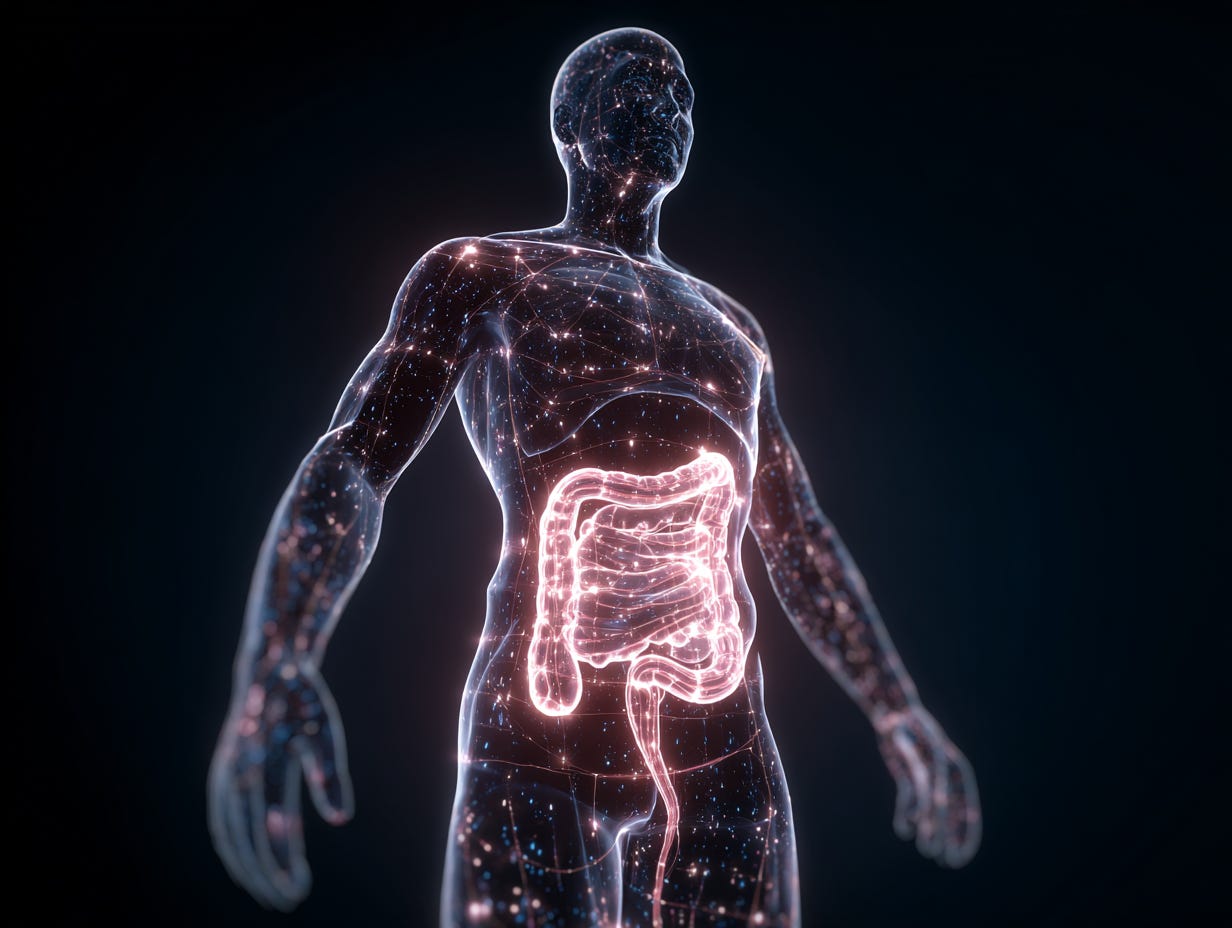The energy of eating: what you're digesting beyond food
A soulful reset through food, breath, and attention.
It was a quiet morning when I made my bowl of kitchari — that warm, golden, one-pot Ayurvedic hug — mung beans, rice, and spices. Simple and sacred.
I felt it… not just in my belly, but in my being. The calm, the clarity, as if my entire body exhaled in relief.
But this time, I realized something: I ALWAYS feel this way when I eat kitchari.
Not because it’s some magical recipe (though it is deeply nourishing), but because I’ve conditioned myself to approach it with presence.
Kitchari is my reset food. Which means, every time I prepare it, I pause. I breathe. I choose slowness. I turn off the noise.
Over time, this became a ritual of reverence. My body remembers, and my nervous system responds. Kitchari is now energetically coded as safety.
And this is the point.
It’s not just what you eat. It’s the energy with which you eat it.
You are always digesting
Food, yes. But also:
Background noise
Emotional undercurrents
Unspoken pressure
Screens flickering across your retinas
Self-talk loops
Digestion is not just biological. It’s energetic.
When you eat in a state of stress, your body doesn’t prioritize digestion. It guards. It braces. Even the cleanest meal becomes a missed opportunity if your nervous system is too tight to receive it.
Eating is a parasympathetic act. Which means your body needs to feel safe, slow, soft.
How you chew tells your nervous system: It’s safe to digest.
How you sit whispers to your gut: You’re supported.
How you breathe before that first bite becomes a sacred yes.
Layers of consumption
Let’s zoom out.
Eating is more than an act of nourishment — It’s a ritual of receiving, and you’re receiving more than food:
The food itself
Is it warm? Spiced? Seasonally aligned? Prepared with care?The environment
Is there loud music, clutter, TV, chaotic conversation?The state of the body
Are your shoulders clenched? Are you standing, rushing, talking on the phone?The emotional frequency
Are you anxious? Grateful? Numb? Distracted?
Each of these contributes to your post-meal feeling.
Lightness is a frequency, not a calorie count.
We don’t need perfection. We need presence.
This isn’t a manifesto for rigid eating rules. We’re not monks in caves.
Life is messy. Kids scream. Emails ping. Restaurants are loud. Sometimes your only option is to eat in the car.
But we do have moments of choice: We can prep the environment. Ask for quiet. Light a candle. Pause. Chew. Breathe. Notice.
Even five percent more presence changes the whole chemistry of the experience.
Your digestion listens not just to what you eat, but how you feel about what you eat.
My first prescription: sit down and taste
Before my food journey began, I ate on the run… often while driving. I didn’t think much of it, that is, until my holistic doctor found out and was absolutely horrified. I saw it in his face and got self-conscious.
He handed me a prescription:
Eat to eat.
Sit down at the table. No book. No TV. No task.
For now, not even music. Just me and my food. Sit. Chew. Taste.
It sounded simple enough. And, it changed my life.
Before then, I took Tabasco with me everywhere I went. I left extra bottles in my friends’ kitchens. Yes, that was me. Some restaurants use MSG. I used Tabasco. Because I was running while eating (whether in my car or mentally), I needed that punch to feel like I was really enjoying my food.
What I learned from eating to eat was that presence was the real spice.
When I started eating with attention, the need for extra heat dissolved. Tabasco became too much. I still love spice when it’s flavorful, but I don’t need it to feel alive.
Eating with full presence became the flavor enhancer, the activator, the experience.
Now when I reach for hot sauce, I ask myself: are you eating to eat?
In case this has to be said: presence reduces inflammation and overwhelm, and strengthens metabolism. Your body begins to relax, repair, and participate.
The identity of the eater
Are you the mindful nourisher?
Or the hurried doer, eating to check a box?
I’ve been both. I still swing, but now I notice. I interrupt the autopilot.
And with kitchari, I don’t even have to try. The rhythm is already there. The sacred is already stitched in.
This is why I use kitchari as the base of the Digestion & Energy Reset. It’s not just about ingredients. It’s about encoding a new experience of nourishment.
Because
every meal is a chance to realign, to remember the frequency we want to live in, and to choose not just nourishment, but reverence.
Try this
Next time you eat, ask yourself:
What else am I consuming right now?
Is my breath shallow or deep?
Can I soften my body before I begin?
Can I pause halfway, just to feel?
Let food and eating be a ceremony rather than a performance.
You don’t need to be perfect. You just need to be present. Because your body is always listening, and it loves when you speak in stillness.
Want to practice this in real life? The "Meal Mindfulness" PDF is waiting for you. Inside you'll find a short but powerful guide to help you set up your eating space, breathe yourself into parasympathetic ease, chew with clarity, and integrate every meal with a sense of wholeness. You’ll get practical steps, sacred suggestions, and daily frequency anchors. It’s more than mindful eating. It’s energy alignment through food.
Here it is:



